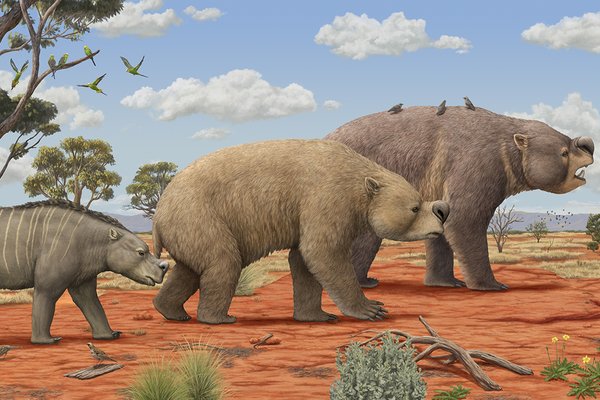Walking in the footsteps of giants
It was the story in Tim Flannery’s An Explorer's Notebook about the emperor, the king and the little pig – three native rats missing from Guadalcanal – that first drew me to work in Solomon Islands. One night in 1992, whilst searching along Guadalcanal’s Poha River for these rodents (all of which had not been seen since the 1880s), Tim spotted a small reddish coloured rat climbing on top of some long grass by the river. As fate would have it, he and his team were frustratingly unable to capture the animal that night. To me, the anguish was clear in his writing – this was either a mammal species new to the world, or one not recorded by a scientist for over 100 years. This fact, that there were mammals that remained in hiding for over a century or were yet to be discovered, had me hooked.
In late 2015, thanks to an Australian Museum Research Institute expedition fellowship and leadership by the University of the South Pacific, I joined an expedition to Guadalcanal, giving me an opportunity to search for some of Solomon Islands’ most rarely encountered mammals.

© Australian Museum
Guadalcanal is one of the largest of the Solomon Islands. At its highest point Mt Popomanasaeu it reaches over 2,330 metres above sea level, higher than Australia’s Mount Kosciuszko. The mountain peaks are blanketed in eerie, moss-covered cloud forests that have rarely been explored by scientists. The Uluna-Sutuhuri tribe recognise these areas as home to Mumu (giants), and Velé (who could best be described as sorcerers). It is thus a region that must be ventured into with caution and in close consultation with landowners. It is also a region that contains species found nowhere else in the world.
In addition to the three species of native rat, there are two species of endangered monkey-faced bat on Guadalcanal. The montane monkey-faced bat and Guadalcanal monkey-faced bat both belong to the genus Pteralopex, which is unique to Solomon Islands. All five known species have evolved in isolation over millions of years and have come to fill roles occupied on the continents by large mammals like monkeys and possums. The contrasts between their mottled black and white wings, belly fur often tipped with yellow or white, and deep red or orange eyes, makes them particularly stunning animals.

The Guadalcanal monkey-faced bat (Pteralopex atrata) is a rare mammal endemic to Solomon Islands. This juvenile was the first capture of this species since 1975.
Image: Jonathan Richmond© Jonathan Richmond
I targeted the Guadalcanal monkey-faced bat (Pteralopex atrata) at an area called Kongulai on the northern side of the island. Kongulai lies on the outskirts of the country’s capital Honiara. Surprisingly it is a quiet village setting surrounded by undisturbed forest that protects Honiara’s water supply. You could be forgiven for thinking you were absolutely isolated from any township.
In late afternoon I hiked the steep slope above Kongulai, past village gardens filled with cassava, sweet potatoes and bananas until we reached the edge of the cultivations next to the forest. Here we hung a fine mist net between two tall trees on the ridgeline close to ngali nut trees (Canarium indicum), mangoes and cluster figs. The fruit trees and adjacent forest made it a perfect place to survey flying-foxes, but Pteralopex are rare and often absent from even the best survey locations.

© Australian Museum
In the early evening we were alerted by a dark flying-fox passing into our net, and as we lowered it to the ground we immediately realised one of our first captures was a juvenile Guadalcanal monkey-faced bat! This species has been the most commonly documented of the five Pteralopex. As it turned out this appeared to be the first capture of this species by a scientist in over 40 years, with the last one caught in 1975! It is testament to how little we know about many of Melanesia’ mammals.
This expedition now stands as a precursor to an exciting period of Australian Museum expeditions into Melanesia. With Tim Flannery heading the project team, I’ve been excited by the great media attention and enthusiasm that has been building for what is to come. In the coming months I will be busy, leading the mammal surveys to Bougainville, Malaita and back to Guadalcanal. Perhaps if I’m lucky, I may soon be writing about a capture of the mystery rodent that eluded Tim all those years ago on the Poha River.
Dr Tyrone Lavery, University of Queensland & AMRI
More information:
- Flannery, T. 2012. Among the islands: adventures in the Pacific. Pp 122–126. Text Publishing, Melbourne.












